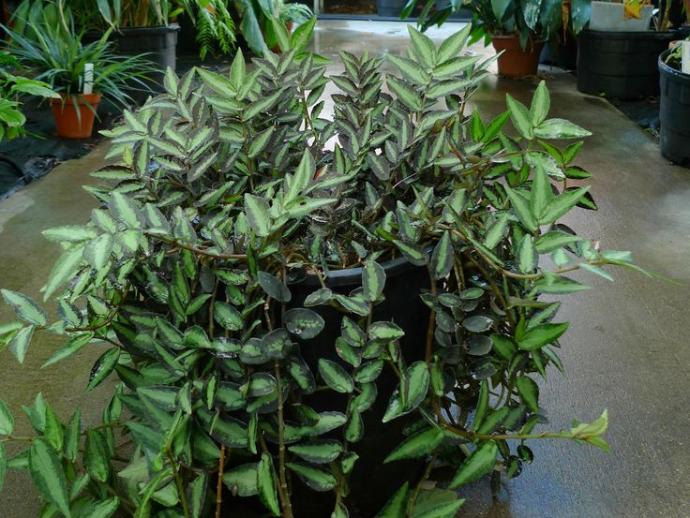Watermelon Begonia
| The Watermelon Begonia is a compact plant known for its unique leaf markings resembling watermelon skin. It thrives in well-draining, loamy soil and moderate light. It is typically grown for its decorative foliage. |

Habit
Herbaceous
Height
0.3 to 0.5 m
Growth
Moderate
Soil
Well-drained, Loamy soil
Shade
Partial sun
Moisture
Low
Edible
No
Medicinal
No
Origin
South America
Climatic Condition
Tropical, Subtropical
Temperature (°)
20°C to 30°C
Humidity (%)
60% to 80%
Potting media
50% Loam, 40% Sand, 10% Compost
Fertilizers
Organic Fertilizer
Watering
Regular watering
Plant Weight
0.2 to 0.5 kg
Flowering Time
Spring to Fall
Soil Ph level
6.0 to 7.5
Water Ph level
6.0 to 7.0
Soil EC
0.5 to 0.7 mS/cm
Yield Per Plant
1 to 2 kg per plant
NPK ratio
10:10:10
life Span
2 to 3 years
Health Benefits
Ornamental, Fragrance
Suggested Grow Media or Potting Mix ?
| 40% peat moss, 30% perlite, 30% compost |
Suggested Fertigation/Fertilizers
| Fertilize monthly with diluted balanced fertilizer |
Common Diseases and Remedies
Root rot, Powdery mildew, Leaf spot, Aphids, Mealy Bugs
Yellowing, black or brown spots on leaves, powdery coating, wilting
Systemic fungicides, insecticidal soap, horticultural oil
HEALTH BENEFITS
Like many houseplants, watermelon begonia may help improve indoor air quality by absorbing toxins and releasing oxygen.
Stress Reduction-
Caring for plants can be therapeutic, reducing stress, anxiety, and promoting a sense of well-being.
Humidity Regulation-
It releases moisture into the air, which can improve humidity levels, preventing dry skin and respiratory issues.
Aesthetic and Mental Health Benefits-
Its beautiful foliage with green and pink patterns adds to indoor aesthetics, which can boost mood and creativity.

